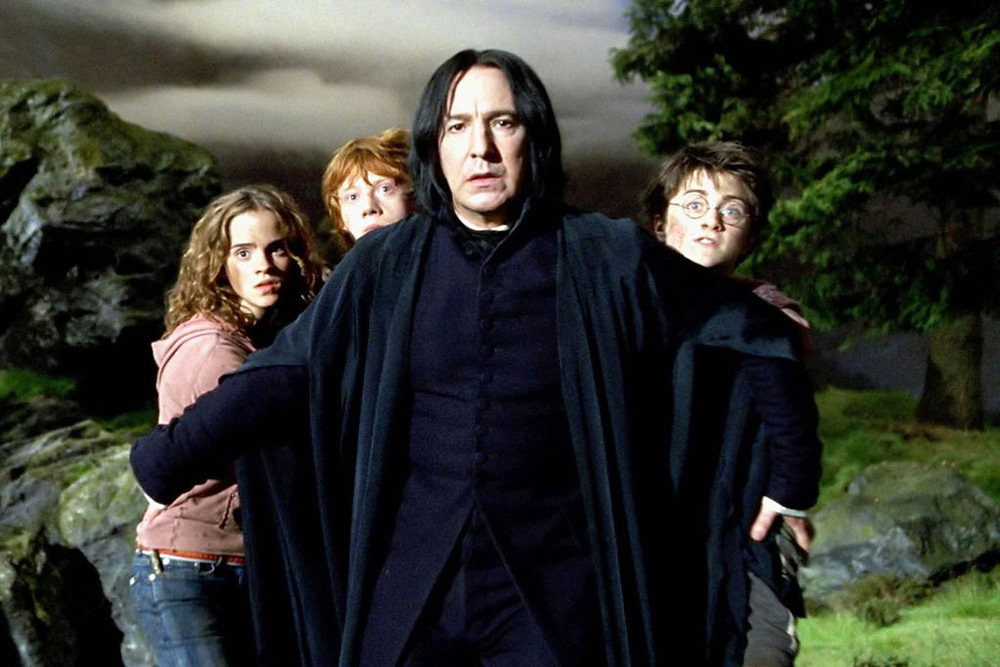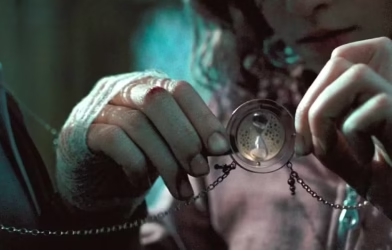The enigmatic character of Severus Snape has been a subject of fierce debate among Harry Potter fans for years. Was he a true hero, sacrificing everything for the greater good? Or was he a villain, deceiving everyone for his own selfish purposes? As one of the most complex and layered characters in J.K. Rowling’s wizarding world, Snape’s true nature is shrouded in mystery, constantly oscillating between light and dark, good and evil. Let’s explore the duality of Severus Snape’s character and try to answer the question: Hero or Villain?
The Dark Mark
When we first meet Severus Snape, he’s a professor at Hogwarts with a reputation for being a bitter, cruel, and mysterious figure. He is initially perceived as a dark wizard, serving Lord Voldemort, bearing the Dark Mark on his arm, and showing blatant contempt for Harry and his friends. Snape’s allegiance to the Death Eaters makes it easy to view him as a villain, but his complex relationship with the Dark Lord and his ability to function as a spy raises doubts about his true loyalties. Was he merely pretending to serve Voldemort in order to gain power, or was he undercover, working to protect the wizarding world from the shadows?
The Love That Defined Him
The turning point in Snape’s story lies in his love for Lily Potter, Harry’s mother. His love for Lily was the driving force behind many of his actions, both good and bad. Snape’s deep sense of guilt and regret over his role in her death fueled his desire for redemption. This love became the foundation for his ultimate choice to switch allegiances and work as a double agent against Voldemort. However, his love also led to bitterness and resentment, especially toward Harry, whom he saw as a painful reminder of Lily’s death.
Despite his outward hostility, Snape’s protection of Harry throughout the series cannot be ignored. He often saved Harry from the shadows, sometimes putting himself in danger to ensure his safety, whether by disarming a Death Eater or saving him during the Quidditch match. His cruel treatment of Harry, though, seems rooted in the pain and jealousy he still felt over Lily’s memory.
The Ultimate Sacrifice
It is in the final book, Harry Potter and the Deathly Hallows, that Snape’s true role in the story is revealed. We learn that he was, in fact, working to protect Harry all along, despite the appearance of being a loyal follower of Voldemort. Snape’s ultimate sacrifice—dying at the hands of Voldemort to ensure Harry’s success—reveals the true depth of his heroism. He had been playing a dangerous game for years, all while keeping his true intentions hidden.
His final act, as revealed through his memories after his death, showed that Snape’s actions were driven by love and remorse. The fact that he chose to protect Harry—despite the boy’s constant hostility and lack of understanding—was a selfless act. Snape’s enduring love for Lily, his commitment to ensuring Voldemort’s defeat, and his role in guiding Harry to the final confrontation with the Dark Lord place him in the category of hero.
Villainous Traits
That being said, Severus Snape’s villainous traits are undeniable. His cruelty toward students, especially Harry, Hermione, and Neville, his bitterness, and his association with the Death Eaters all contribute to the image of a man who is far from a traditional hero. He was manipulative, and even after his redemption, his behavior toward others could still be described as cold and harsh.
Moreover, Snape’s association with Voldemort, even if only as a spy, always left a shadow of doubt hanging over his actions. His willingness to use dark magic, along with his harsh demeanor, kept him at odds with the other characters throughout the series, making it hard to see him as entirely good.
Conclusion: Hero or Villain?
In the end, Severus Snape was neither entirely hero nor entirely villain—he was both. His actions were driven by a complex mixture of love, guilt, and duty. He made immense personal sacrifices, facing constant danger to protect others, but he also committed unforgivable acts, particularly during his time as a Death Eater. Snape is a tragic figure whose journey exemplifies the gray area between good and evil, where personal demons, love, and redemption intertwine.
Snape’s story is one of redemption, of a man who fought his own inner battles and, despite his flaws, ultimately chose the right side. He was a hero, yes, but one shaped by darkness. His legacy serves as a powerful reminder that heroes and villains are not always clearly defined—they can be both, depending on the choices they make, and how their stories are told.










